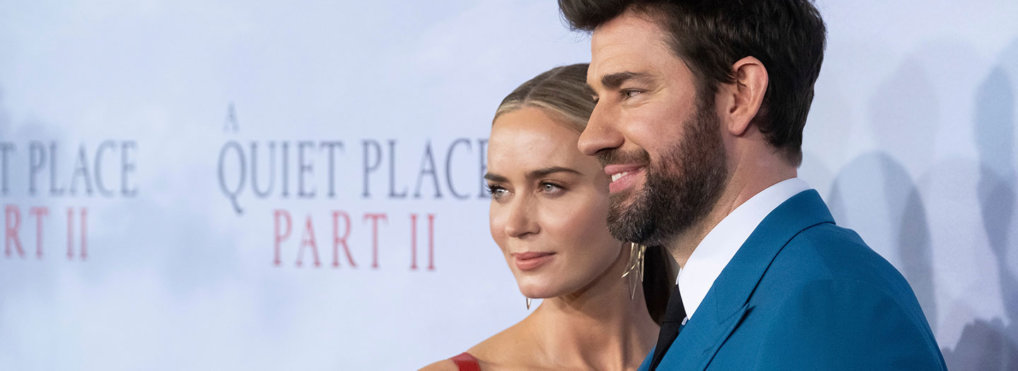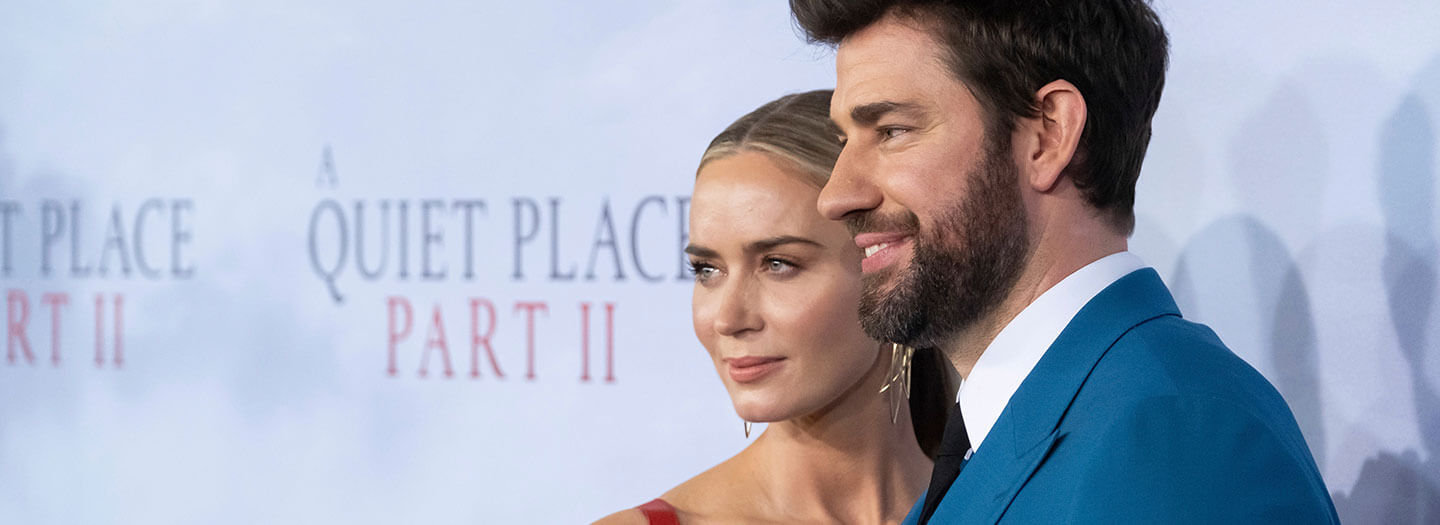[ad_1]

The world of A Quiet Place draws on unique kinds of fear. In this imagining of a post-apocalyptic world, any sound above a low whisper draws spindly monsters that move with unnatural speed, whose entire existence seems predicated on killing humans.
Though you may know him as Jim from The Office, John Krasinski is the writer and director of A Quiet Place and A Quiet Place 2. He also plays the main character in the first movie, Lee Abbott, a father who does everything he can to protect and provide for his family in the nightmarish world.
Krasinski expertly builds tension in the eerily silent world where one accidental bump of a table could spell a gruesome death. The riveting films move at a tight, gut-wrenching pace. No one dares to rustle a bag of candy in the strangely silent theater. Throughout, the family communicates almost exclusively in American Sign Language because their daughter is deaf and so that they make minimal noise.
The movies explore themes of love, family, and sacrifice with moving depth. Though by no means grotesque, and though it avoids the demonic, it is a horror movie riddled with suspense and death. With that warning given, I highly recommend both movies. The first and second received positive reviews both from audiences and critics for good reason.
A horror movie as a love letter?
Table of Contents
Warning: spoilers for A Quiet Place and A Quiet Place II ahead!
Krasinski did not initially want to do a sequel to A Quiet Place. In an interview with Screen Rant, he said, “I had no intention of doing a sequel because I’m an audience member first, before a director or writer or actor. When I see sequels, a lot of times I do the eye roll.” I think all movie lovers can relate to that (see the Jaws movies).
He overcame this initial hesitation when Krasinski felt he could draw a new metaphor for the second movie that moved him. In an interview with Esquire, he responded to claims that the movie reflected political messages by stating that the first movie was intended solely as a metaphor for parenthood; the second one is meant to extrapolate how kids grow up.
For him, the first movie is a love letter to his own kids. In his view, it shows what he would be willing to sacrifice for them as a father.
The drama of the first movie climaxes in a tear-jerking scene when the father sacrifices himself for his daughter and son. He looks to his daughter and slowly signs: “I love you. I have always loved you,” then bellows a desperate scream to draw the monster to himself, which kills him, giving the children a chance to escape.
That is a picture of biblical love.
The power of parenting
Several themes tie in with the value of family through the films.
The dynamic of the family reflects love and joy, even in the midst of immeasurable suffering and hardship. In one scene, the Abbotts silently pray before one of their meals. In another, they play a quiet game of Monopoly, rolling dice on soft carpet and using cotton balls for hotels. The mother of the family, Evelyn (played by Krasinski’s real-life wife, Emily Blunt) does everything she can to make their home livable and warm, in spite of the nightmarish world.
Another example of this love in action comes from Evelyn’s pregnancy. Instead of finding ways to abort their unborn child, they go to every measure possible to save it. Instead of saying, “We shouldn’t bring this child into this world of suffering,” they choose the baby, in what was (probably) an unplanned pregnancy.
The baby is born in less-than-ideal conditions: Evelyn gives birth by herself in a dirty bathtub, with the monstrous creature ten feet away, after she’s just stepped on a nail. That decision expresses the value of the baby’s life to the audience without making a conspicuous pro-life argument. The grit and strength of the mother to care for her children shines through both movies. She demonstrates strength and courage in protecting her children (Joshua 1:9).
As for the father, Lee ultimately sacrifices himself. This follows the biblical perspective of a husband’s duty to his wife (and by extension, his family): to love her as Christ loves the church (Ephesians 5:25). This means dying on their behalf if necessary, as Christ did for us. Sacrifice is at the center of biblical love. As a father figure, Lee reflects God the father’s love for his children.
John Krasinski seems to enact this message in his everyday life. He shared in the Esquire interview that, while shooting the movie, he carved out time every day to have breakfast with his family and walk his kids to school.
The importance of independence
Krasinski explains the message of the second movie in an interview saying, “If the first movie is about parenthood and the promise that you make to your kids that I’ll keep you safe no matter what—that’s, that’s inevitably a false promise. . . . The second one is about that promise being broken and it’s about growing up and it’s about moving on and dealing with loss.” He continues, “For me this whole movie becomes about community. It’s about who do you trust in dark times and the power of relying on other people in dark times.”
This message may be hard for many parents to learn.
In the second movie, Regan (played by Millicent Simmonds) becomes the focus as she strikes out on her own to try to give the upper hand to humanity by broadcasting the feedback from her hearing aid to weaken the monsters. Simmonds, herself deaf in real life, plays the lead role with vivid emotions and excellent acting.
Parents must, at some level, let go of their children and entrust them to learn from others in their community. Their children need to grow their character, make faith their own, and learn who they are, even though the world is a dangerous, difficult place (but thankfully not quite as dangerous and difficult as the world in A Quiet Place).
The deep need for parental modeling
To any parents feeling sadness at that notion, consider another beautiful lesson of the movie from Regan’s story arc. Continually, the movie hearkens back to Lee’s death, and Regan’s character is compared to her father’s. Instead of feeling embittered by her father’s sacrifice, she chooses to follow his example of bravery and love.
In his review for the Gospel Coalition, Brett McCracken writes, “As a parent, this film reminded me that no book, YouTube video, or Instagram influencer will train my sons in virtue more potently than my wife and I modeling it for them in authentic, non-hypocritical ways.”
John Krasinski and his team have developed a beautiful, dual lesson in these two movies. They teach the importance of a strong family and sending young adults into the world, hopefully armed with an example of wisdom and love from their parents.
[ad_2]
Source link

